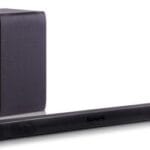Do you find yourself constantly battling with a sagging pool cover? You’re not alone.
Many pool owners face this frustrating issue, especially during the off-season. A sagging pool cover not only looks unkempt but can also lead to bigger problems like debris accumulation and water contamination. Imagine the peace of mind you’ll have knowing your pool is protected, clean, and ready to use when the warm weather returns.
In this guide, we’ll reveal simple yet effective strategies to keep your pool cover taut and secure. Get ready to save time, reduce stress, and enjoy a pristine pool year-round. Let’s dive into the solutions that will keep your pool cover in top shape!
Causes Of Pool Cover Sagging
Pool covers are essential for maintaining the cleanliness and safety of your pool. They can sometimes sag, leading to various problems. Understanding why pool covers sag helps prevent these issues. Knowing the causes can help you take action early.
Common Material Wear
Materials wear out over time. Sunlight and chemicals can break down the cover. Weak spots develop, leading to sagging. Regular inspection helps spot these issues early.
Improper Installation
Incorrect installation often causes sagging. If the cover is too loose, it won’t stay taut. Ensure the cover fits snugly over the pool. Follow the manufacturer’s guidelines closely.
Water Accumulation
Water pooling on the cover causes sagging. Heavy rain can create puddles. Regularly clear water off the cover. This prevents damage and sagging.
Lack Of Support
Proper support structures are essential. Without them, covers may sag under weight. Install poles or other supports to keep the cover elevated. This prevents sagging and maintains tension.
Heavy Debris
Leaves and branches can weigh down the cover. Clean the cover frequently to avoid sagging. Keeping the cover debris-free extends its life.
Choosing The Right Pool Cover
Choosing the right pool cover is essential to prevent sagging. A well-fitted cover keeps debris out and maintains water quality. It also ensures safety and reduces maintenance costs. Consider material and size before purchasing.
Material Considerations
Material affects durability and performance. Vinyl is popular for its strength. Mesh covers allow water drainage, reducing sagging risk. Solid covers are great for blocking sunlight. Pick a material based on climate and pool use.
Size And Fit
Proper size prevents sagging. Measure pool dimensions accurately. An oversized cover can sag and tear easily. A snug fit enhances water protection and reduces debris collection. Consult a professional for precise measurements.
Proper Installation Techniques
Ensuring your pool cover doesn’t sag requires proper installation techniques. Correct installation helps maintain its durability and functionality. This process involves securing the edges and using support systems. Both of these steps are essential for a well-fitted pool cover.
Securing The Edges
Start by ensuring the edges are tightly secured. This prevents the cover from slipping or sagging. Use durable fasteners to keep the cover in place. Make sure the cover fits snugly around the pool’s perimeter. Check for any gaps or loose areas regularly. Adjust as necessary to maintain a tight fit.
Using Support Systems
Support systems play a crucial role in preventing sagging. Use cover reels or poles for additional support. These tools help distribute weight evenly across the cover. Consider installing air pillows beneath the cover. This provides extra lift and reduces stress on the material. Regularly inspect these systems for wear and tear.

Credit: www.pinterest.com
Maintenance And Care
Preventing pool cover sagging involves proper tension and regular maintenance. Ensure your pool cover is tightly secured. Use a cover pump to remove excess water and debris. Regularly adjust straps and support rods to maintain even tension.
Maintaining and caring for your pool cover is essential to keep it from sagging and ensure its longevity. Regular attention can prevent costly repairs and save you from the headache of dealing with a sagging cover. Let’s dive into some practical maintenance tips that can help you keep your pool cover in top shape.Regular Cleaning
Keep your pool cover clean to avoid unnecessary weight that can lead to sagging. Debris, such as leaves and twigs, can accumulate and add extra pressure. A simple routine could be using a soft broom or a pool cover pump to remove debris. Water accumulation is another culprit for sagging. After a heavy rain, you might notice water pooling on the cover. Using a pump to remove this excess water regularly will maintain the cover’s integrity. Have you ever noticed mold or mildew on your cover? This happens when the cover stays damp for long periods. Regularly cleaning and drying your cover can prevent this issue and extend its lifespan.Inspecting For Damage
Consistent inspections are crucial to prevent small issues from becoming major problems. Check for tears or holes that might let water seep through and cause sagging. Repairing these promptly with a patch kit can save you hassle in the long run. Evaluate the tension of your cover straps. Are they loose or frayed? Tightening or replacing them can provide the necessary support to keep your cover firm and sag-free. Examine the edges and seams of the cover. Weak seams can become problematic over time. A quick check can reveal if resealing is needed to ensure the cover stays secure. Have you considered keeping a maintenance log? It’s a handy way to track when you last cleaned or repaired your cover. This habit not only keeps you organized but also helps in anticipating future maintenance needs.Using Pool Cover Pumps
Pool covers can sag due to water accumulation. This can damage the cover. It also makes pool maintenance more difficult. A pool cover pump can help. It removes excess water efficiently. This prevents sagging and prolongs the cover’s life. Let’s explore how to use these pumps effectively.
Selecting The Right Pump
Choose a pump designed for your pool size. Consider the pump’s capacity. A larger pool requires a more powerful pump. Check the pump’s automatic shutoff feature. This stops the pump once the water is cleared. Look for energy-efficient models. They save electricity and reduce costs.
Installation Tips
Place the pump in the center of the pool cover. This ensures even water removal. Use an extension cord rated for outdoor use. Secure the cord to prevent trips or falls. Follow the manufacturer’s instructions carefully. Regularly check the pump during use. Keep the pump clean and free of debris.

Credit: emoyer.com
Winterization Strategies
Winterizing your pool involves more than just covering it up. Protecting your pool cover from sagging is crucial during the cold months. A sagging cover can lead to damage and costly repairs. Implementing effective strategies ensures your cover remains taut and functional.
Removing Excess Water
Water accumulation causes pool covers to sag. Regularly remove any excess water to maintain tension. Use a pump or siphon for efficient water removal. A dry cover stays taut and minimizes strain on its structure.
Tensioning The Cover
Proper tensioning prevents sagging. Adjust the cover’s straps and anchors regularly. Ensure they are tight and secure to keep the cover firm. Check for slack and make adjustments as needed.
Troubleshooting Common Issues
Keep your pool cover from sagging by using water bags or anchors for support. Ensure the cover is tightly secured and free of debris. Regularly check and adjust the tension to maintain a smooth surface.
Dealing with a sagging pool cover can be a frustrating experience, especially when you’re trying to maintain a clean and safe swimming environment. While a sagging cover might seem like a simple annoyance, it can lead to bigger issues if not addressed promptly. Let’s dive into some common problems you might encounter and how to effectively troubleshoot them.Addressing Water Accumulation
Water accumulation is one of the most frequent causes of a sagging pool cover. If rain or snow piles up on top, it can weigh down the cover significantly. Consider using a pool cover pump to remove excess water efficiently. Many pool owners find that an automatic pump saves time and effort, especially during rainy seasons. Have you ever noticed how quickly water can accumulate overnight? Keeping an eye on weather forecasts can help you prepare and act quickly to prevent sagging.Fixing Loose Anchors
Loose anchors can create slack, leading to an uneven and sagging pool cover. Check the anchors regularly to ensure they’re secure and holding the cover taut. If you find any loose anchors, tighten them immediately. Sometimes, simply adjusting the tension can make a world of difference. Do you frequently adjust the cover due to wind or frequent use? Consider reinforcing the anchors with additional weights or more durable materials to enhance stability. Taking these steps can help maintain your pool cover’s integrity and extend its lifespan. What steps will you take to ensure your pool cover stays in top shape?
Credit: www.youtube.com
Seeking Professional Help
Consulting experts can prevent pool cover sagging. They provide tailored solutions for proper installation and maintenance. Professional help ensures optimal tension and durability, protecting your pool year-round.
Seeking professional help for your sagging pool cover might seem like a big step, but sometimes it’s the best solution. While DIY fixes can be handy, there’s a point where expertise is needed. This ensures that your pool cover is not just temporarily fixed but is safe and durable for long-term use.When To Call An Expert
You might be wondering, when is the right time to call in the pros? If you’ve tried adjusting your cover and it’s still sagging, it’s time to consider professional help. Notice any damage like tears or broken parts? These are signs that experts should step in. They have the tools and knowledge to fix or replace parts without causing further damage. If you’re concerned about safety, don’t hesitate. A sagging cover can pose risks, especially for children and pets.Cost Considerations
Worried about the cost? It’s a common concern. However, think about the long-term savings. Professionals can prevent potential damage that may end up costing more to fix later. Repairs by experts can extend the life of your pool cover, saving you from frequent replacements. When you weigh the costs, consider the peace of mind and safety that comes with professional repairs. Isn’t it worth it to ensure your pool is safe and secure? Think about it: Have you ever regretted investing in quality and safety?Frequently Asked Questions
How Do I Prevent My Pool Cover From Sagging?
Ensure proper tension with secure anchoring. Adjust regularly to maintain shape. Check for wear and tear.
What Materials Are Best For Pool Covers?
Durable materials like reinforced vinyl or mesh are ideal. They resist sagging and withstand weather conditions.
Can Water Cause Sagging In Pool Covers?
Yes, water accumulation leads to sagging. Use a pump to remove excess water after rain or storms.
How Often Should I Adjust My Pool Cover?
Check and adjust weekly. Regular inspection prevents sagging and prolongs the cover’s lifespan.
Are Pool Cover Supports Effective?
Yes, supports help maintain tension. They provide stability and reduce sagging risks significantly.
Conclusion
Keeping your pool cover from sagging is important. It ensures safety and maintains the pool’s condition. Regular checks and proper installation help. Choose high-quality materials for long-lasting results. Adjust tension periodically to prevent slack. Clear debris from the cover to maintain its strength.
A well-maintained cover saves time and money. Protecting your pool is simple with these tips. Follow them, and enjoy a clean, safe pool area. These steps make pool care easier. They keep your cover intact and functional. Remember, a little maintenance goes a long way.
Your pool deserves the best care.




